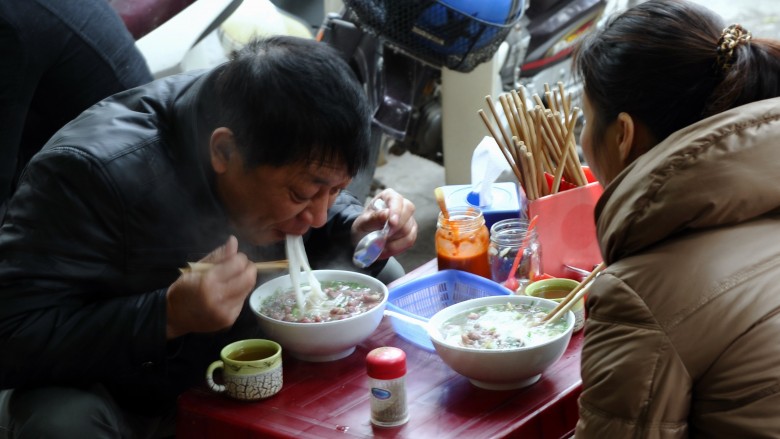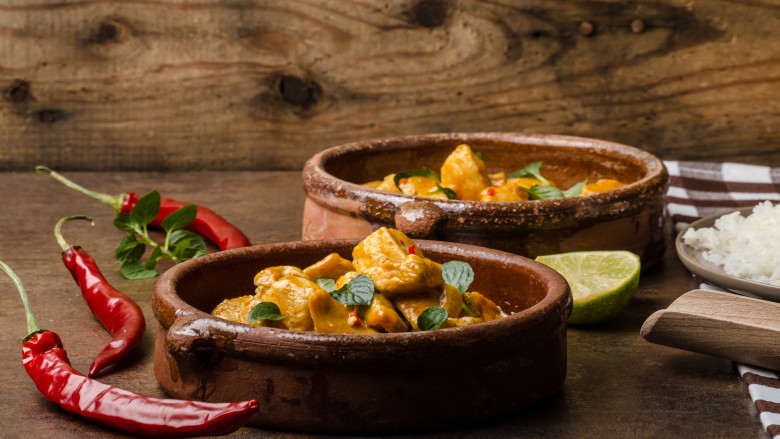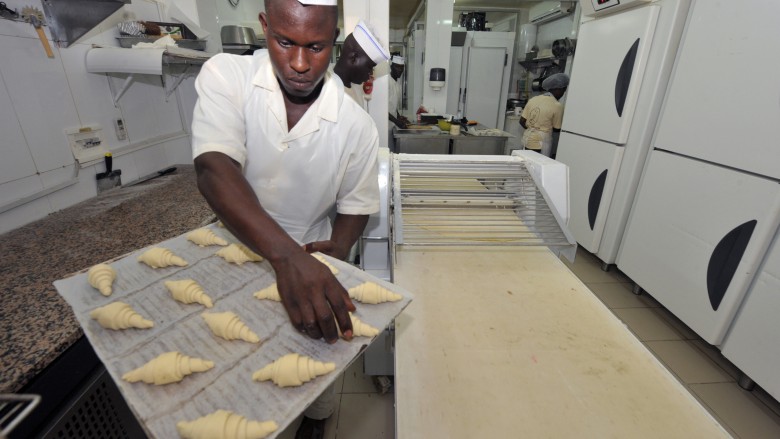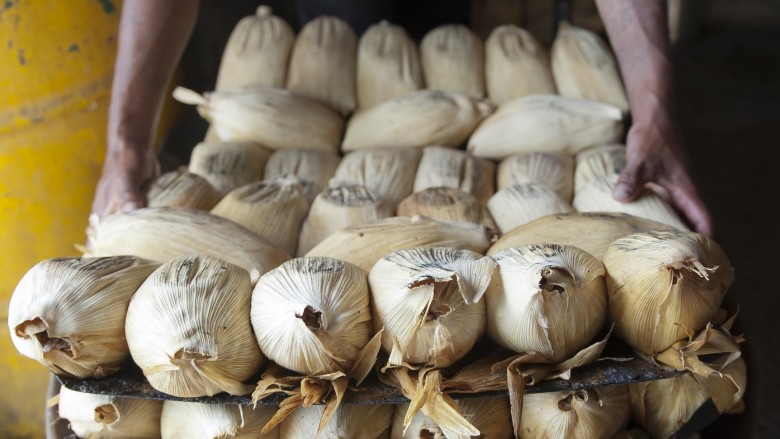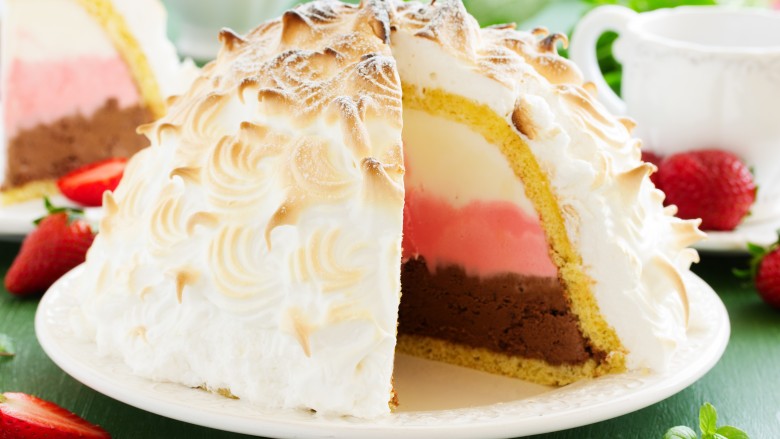Dishes You Should Never Make At Home
Whether they take too long, use too many obscure ingredients, or simply require an excess of effort, some dishes are simply not worth making at home. While I fully get that nowadays making food from scratch earns you a badge of honor, I am also a strong believer in leaving it to the professionals when it's the most cost-effective thing to do. I say all this as someone who loves spending time in the kitchen, so believe me when I tell you why you ought to skip making the following dishes at home.
Sushi
I love ordering sushi at Japanese restaurants because it feels special. Part of the sentiment has to do with going out to enjoy a delicacy prepared by professionals who have spent years to learn how to do that work. While I understand the desire to give sushi-making a try, the fact that it is a practiced craft is one good reason to skip the homemade session. Another reason? Authentic sushi uses raw fish, which can be tricky if you're not a seasoned pro. From procurement to cleaning to preparation, working with raw seafood can pose serious food safety hazards. As such, sushi really isn't worth trying to make from scratch, as it's just one of those things that's best left to a professional.
Pho and other Vietnamese soups
There's something incredibly comforting about sitting down to a steaming order of pho, bun bo hue, or any other insanely flavorful, meaty Vietnamese soup. As such, I totally understand the desire to replicate the experience at home. While there are countless recipes out there for Vietnamese soups, most of them are quasi-authentic takes on the originals at best. The reason is that the bowls of soups you order at Vietnamese restaurants get their delicious appeal from rich and flavorful bone broths that require several hours to make. In most cases, a generously sized bowl of pho can be had in New York City — one of the most expensive cities in the world — for $10 or less. Due to the time-consuming nature of the Vietnamese soup-making process and the relative low cost at restaurants, I really can't justify making any of these soups at home.
Deep-fried anything
Deep frying is a culinary activity I find truly annoying. Whenever I have subjected myself to frying foods in my kitchen (sans deep fryer, mind you) I have regretted the experience immediately after it has begun. Sure, I like old-fashioned doughnuts, onion rings, and the occasional fried chicken, but boy, do I hate the mess that ensues. Filling an entire large pot with oil always seems extremely wasteful — and gross — since I know I'm only cooking a small batch of whatever I'm making. Afterward, I inevitably strain the oil and keep it around for a few days until I realize I have nothing else I want to deep fry for another stretch of several months and finally throw it out. Between the splatter, oil burns, and waste, I tend to satisfy my rare cravings for deep-fried foods when I'm eating out instead.
Most Indian dishes
Indian food is one of my favorite cuisines to enjoy on an evening out with friends. Whether I order a house curry, a satisfying daal for the table, or traditional chicken that's been roasted in a tandoori oven, the dishes never fail to impress me with their sheer depth of flavor. Warmly flavored, rich, and filling, these traditional delicacies taste so dreamy because they always require great technique, sometimes special equipment, and likely a great variety of spices and seasonings unique to Indian cooking. As I'm not seasoned when it comes to cooking Indian dishes and I don't have half of what I need to bring beautiful, layered flavors to them anyway, I tend to avoid trying to make my own Indian food. Luckily, Indian restaurants from all regions are widely available.
Croissants
As a seasoned baker who no longer bakes professionally, I appreciate the classic appeal of a perfectly made croissant. Rich, buttery, and flaky, it epitomizes French pastry. Having made thousands of croissants for bakeries in the past, I can attest to their labor-intensive and finicky nature. Rolling out thin sheets of dough laminated with butter is a task best done with a $5,000 professional-grade sheeter, a machine most bakeries own and most home bakers do not. Since the butter needs to remain extremely cold while you work on the dough, the kitchen needs to be climate-controlled. Forget about making croissants in a steamy kitchen in the middle of summer. While you can roll out croissant dough by hand and refrigerate it every few minutes to keep it cold, why bother when there's likely to be a fine bakery nearby that sells delectable croissants?
Kimchi
Ah, kimchi. If you love this Korean dish of fermented cabbage and other veggies, you've probably been tempted to make your own. I don't blame you at all since pickling is easy and cheap. That said, I warn against making kimchi in particular because this delicacy uses pungent ingredients such as shrimp paste and fish sauce to achieve its unique pickled flavors — all of which tastes delicious but also makes your refrigerator reek for a long time. When I told my Korean friends that I made kimchi at home and it turned out great but my fridge reeked, they patiently explained the concept of the kimchi fridge. Their Korean relatives who make kimchi on the reg have a second refrigerator solely dedicated to these stinky jars. Short of acquiring a second fridge, you'd be better off eating kimchi at a Korean restaurant than making your own.
Ramen
Ramen is a Japanese dish of wheat noodles and bone broth topped with a variety of savory ingredients like soft-boiled egg, fatty slices of braised pork, and seaweed, to name a few. Like the aforementioned Vietnamese soups, one of the keys to this specialty's allure is its impossibly rich broth. Said broth takes a long time to make and automatically turns ramen into a two-day project if you want to achieve anything close to what you would get at a good traditional ramen shop. While it can be fun to try your hand at making ramen at home, unless you're prepared to spend some time on the broth, the results are likely to pale in comparison to what you would order at a restaurant.
Tamales
A pre-Columbian food with an Aztec-derived name that translates to "wrapped food," tamales are made with pork, chicken, or seafood mixed with corn dough (masa) enclosed in corn husks. As they are so labor-intensive to make, this ancient dish is usually prepared in homes only for holidays, turning the cooking event into a family effort. Since this delicacy takes a long time to make, most people end up making large batches of it. Tamales require a lot of time and energy, so my suggestion is for you to grab one from a local vendor. There's a place near me in Brooklyn that sells hefty tamales for $2 each!
Baked Alaska
Baked Alaska is a dramatic-looking dessert of ice cream and cake covered in toasted meringue. While it's an awesome dish to behold, I'm not sure if I find it worth the effort to try and replicate at home. To make this dish, you have to freeze the bowl of ice cream until it's extremely hard, then invert it on top of a baked layer of cake, then freeze once more, and finally top with meringue and broil to get that pretty toasted look. Finicky to the max and a bit over the top altogether, this meringue confection is one I'd save for ordering at a restaurant if you can find a place that still serves this distinctly old-school dessert.
There's a time for home cooking and there's a time for getting yourself to a restaurant. You make the call.


